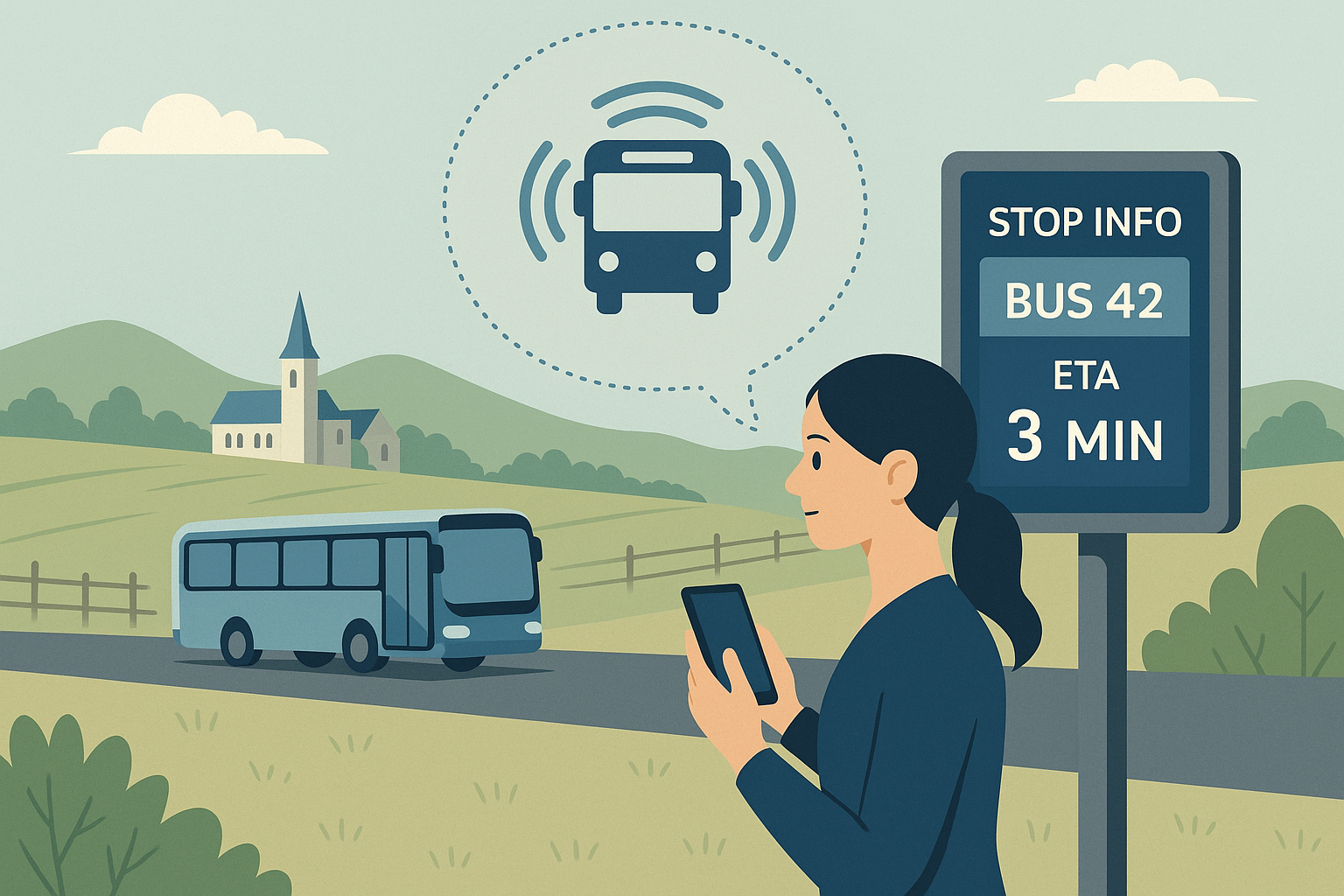Winning Riders Back: The Role of Real-Time Data in Reviving Public Transport in Low-Density Areas
Public transport in rural and low-density areas is facing not just economic challenges, but something arguably more difficult to fix: a crisis of perception. In many small towns and suburban regions, buses are no longer seen as a natural or convenient part of daily mobility. Instead, they are often perceived as slow, unreliable, or only used by those with no alternative.
Car ownership is widespread — and for good reason. Private vehicles offer flexibility, privacy, and predictability, all of which are especially valuable in places where public services are sparse or poorly coordinated. Once a community becomes car-dependent, breaking that pattern is difficult.
To reverse this trend, it is not enough to simply offer service. Public transport needs to compete on confidence — and that is where real-time data becomes a powerful lever.
When passengers are uncertain whether a bus will show up, or how long they’ll be waiting, they make backup plans. They drive. They cancel. They stay home. But when travelers can see — on their phone or at the stop — that the next bus is three minutes away and moving on schedule, a psychological shift takes place. Uncertainty fades, and trust begins to rebuild.
This is not just about digital convenience. Real-time passenger information helps address real and perceived weaknesses in rural mobility:
- It gives parents confidence their children’s school bus is on time — or alerts them if it’s not.
- It helps elderly riders or those with mobility needs avoid long waits in bad weather.
- It allows commuters to make split-second decisions about whether to take the bus or bike, or when to leave home.
- It opens the door for intermodal travel, where buses, bikes, and rail connections work in sync.
Moreover, real-time data is the basis for smarter service design. Instead of sticking to fixed assumptions about who uses which stops and when, transport planners can observe actual usage patterns — which trips are popular, which connections fail, which areas are underserved.
This feedback loop enables a more dynamic, rider-centered approach. Timetables can be adapted. Stops can be repositioned. Low-traffic routes might be reimagined as demand-responsive services. None of this works without accurate, up-to-date data.
The importance of perception also means communication matters. When a bus is delayed by 10 minutes but passengers know why — and when to expect it — the experience feels more respectful. Real-time alerts turn frustration into information. They humanize the system.
Solutions like BusPay aim to make this kind of information accessible even to the smallest operators. With lightweight tools to generate and publish GTFS Realtime feeds, and dashboards that visualize fleet status, small-town networks can offer their passengers the same digital expectations met in cities — without needing a large IT department.
In the end, winning back ridership isn’t about technology alone. But it is about delivering on the promise that public transport is a viable, modern, and trustworthy alternative to driving. And that starts with knowing, and showing, what’s really happening — in real time.

